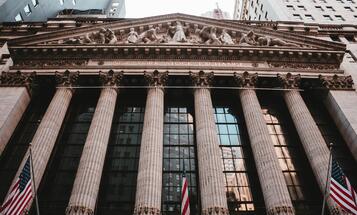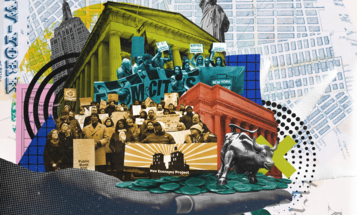
Extraction Industry: Wall Street's Cut of Capital Is Too Big
How and why large financial institutions damage the middle class even if there is no financial crisis.
Four years of intense debate and lobbying concerning the reform of the financial markets has produced historic legislation that, as implemented, moves us closer to prudent and transparent financial markets. But the new regime falls short in important ways. A central reason is that the connection between esoteric practices, like derivatives and high-frequency trading, and the economic forces that affect the general public on a daily basis remains obscure.
The danger from catastrophic failure of the system is widely perceived. Who could deny the damage caused by the systemic meltdown in 2008? Certainly, people know that the banks took imprudent risks based on distorted incentives that fanned unprecedented levels of avarice. But few can describe the source of these incentives.
Beyond the need to protect the general economy from failure of too-big-to-fail banks, the public understands the trading-dominated financial system to be riddled with unfairness that primarily affects the profits and losses of the wealthy and powerful. No one has made the case that the exploitation of market distortions, often induced by large institutions wielding massive market power, damages the middle class even if there is no financial crisis.
This is a significant problem. Aside from mitigation of the consequences of too-big-to-fail institutions and risk management, financial market reform has centered on trading transparency. Bank capital will be increased and leverage will be limited. Market fairness is a fine aspiration, but it is designed to assure transparent transactions, an approach that worked well in the New Deal financial reforms. The approach ignores the possibility that the very structure of the modern market is a danger to the economy.
The new administration has an opportunity to shift the focus of financial reform to the proper role of the financial sector. Thanks to the work of some fine researchers, we can now evaluate the effects of modern trading practices on the economy. The key function of the financial system is not transaction fairness; it is the efficient transmission of capital from investors to businesses, governments, and individuals who use it to fund productive activities. This process is capital intermediation. It facilitates economic growth, job creation and income and wealth parity. If capital intermediation is inefficient -- if, in effect, wealth is being lost or wasted as Wall Street middlemen take too big a cut -- the effectiveness of monetary policy to growth is diminished, productivity is burdened to the detriment of job growth and incomes and wealth disparity grows.
These issues sound all too familiar.
Inefficient capital intermediation means that the process costs more than it should. The financial sector properly earns profits for providing the pipeline between investors and productive capital users. If the sector charges more for providing the service than is necessary for efficient intermediation, the process is inefficient. The financial sector extracts more than the value it provides. “Economic rents” are too high in terms of efficiency.
The impressive advances in information technology and quantitative analysis imply that capital intermediation should have become more efficient. Research shows that the opposite is true. The process has become more costly, i.e., less efficient. How is this possible? The answer is that advanced IT and quantitative analysis can also be used to distort the efficient functioning of the markets by creating asymmetric information that can be exploited by more nimble and better capitalized market participants. The unprecedented concentration of the financial sector has created tremendous market power in a handful of banks. Armed with the ability to exploit and often create market distortions, banks wielding massive market power can and do extract tremendous value from the capital intermediation pipeline.
The scope of this is staggering. In the 20 years prior to 1980, the beginning of the financial deregulation era, the financial sector share of GDP was 4.12%. It has increased steadily to 8.32% since that time. This represents an increase to $635 billion each year. The financial sector is extracting increasing amounts from the economy, depleting its productive capacity much like the exploitation of a finite natural resource. This system is unsustainable.
The financial crisis spawned reforms that address its immediate causes and consequences. This is completely understandable. But implementing these provisions is like plastering a wall damaged by water. If the leak in the pipe is not repaired, the source of the damage remains. Financial system regulation needs to go deeper into the role of the financial system in the economy than it has to date. The administration and Congress must not be cowed by the lobbyists’ fear mongering that warns of stifling innovation and reduced “liquidity.” These are at the very core of the danger of unregulated financial markets to the economy. The reformers should keep their eye on the core function of the system, capital intermediation, not the traders’ cost of executing an individual transaction. The point is to grow the economy, not to assure low cost trades and access to exotic derivatives.



